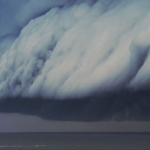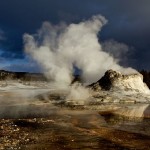Underwater Volcano Becomes Active Off Oregon Coast
Scientists are concerned over an underwater volcano off the Oregon Coast as its activity increases.
The Axial Seamount is an underwater mountain that juts up 3,000 feet (900 meters) from the ocean floor, and is part of a string of volcanoes that straddle the Juan de Fuca Ridge, a tectonic-plate boundary where the seafloor is spreading apart.
Axial Seamount was first detected in the 1970s by satellite altimetry, and mapped and explored by Pisces IV, DSV Alvin, and others through the 1980s.
A large package of sensors was dropped on the seamount through 1992, and the New Millennium Observatory was established on its flanks in 1996. Axial Seamount received significant scientific attention following the seismic detection of a submarine eruption at the volcano in January 1998, the first time a submarine eruption had been detected and followed in situ.
Subsequent cruises and analysis showed that the volcano had generated lava flows up to 13 m (43 ft) thick, and the total eruptive volume was found to be 18,000–76,000 km (4,300–18,200 cu mi). Axial Seamount erupted again in April 2011, producing a mile-wide lava flow and fulfilling a 16-year cycle that had been predicted in 2006.
On April 24th, a series of around 8,000 minor earthquakes swarmed the Oregon Coast setting off alarms that something is happening.
See the Video for More:






